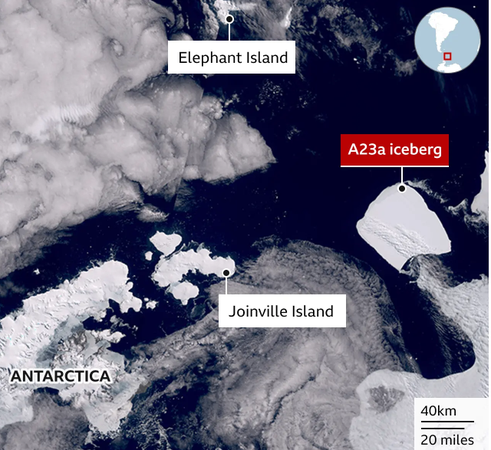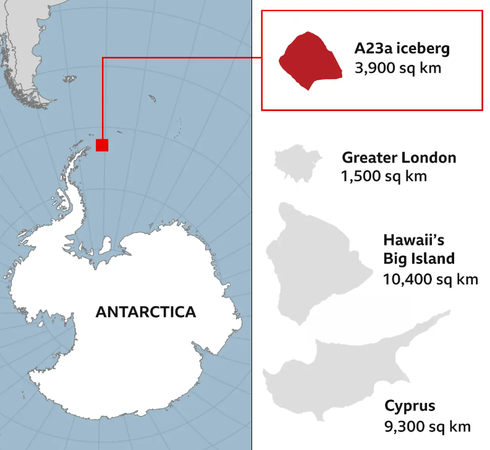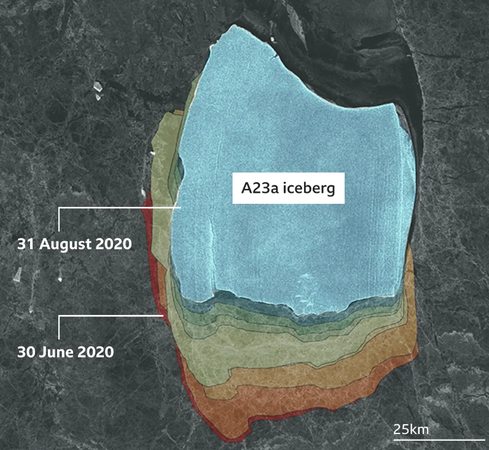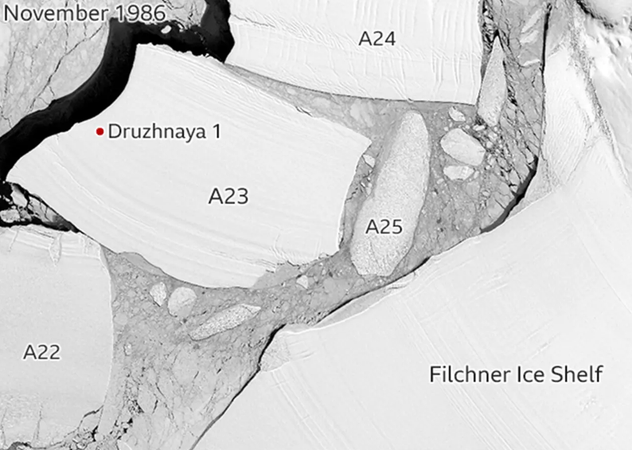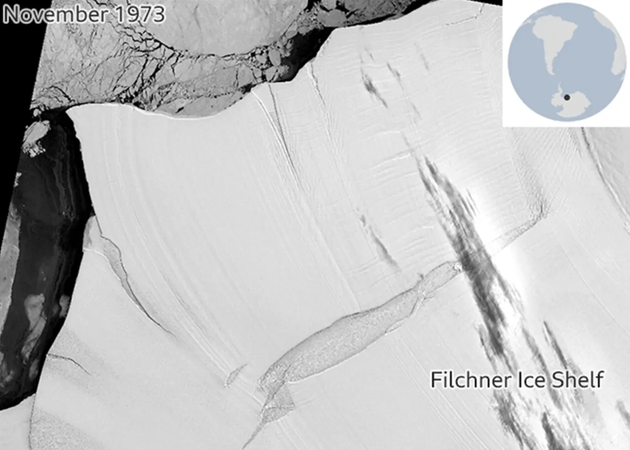
The world's largest iceberg, named A23a, has been put into motion after more than 30 years of being stuck on the ocean floor.
A23a is part of a massive berg eruption from the White Continent's Filchner Ice Shelf. It broke away from the Antarctic coastline in 1986 and became an "ice island" in the Weddell Sea.
With an area of almost 4,000 square km, the iceberg is more than twice the size of London, according to British researchers.
A23a is a real colossus and it is not only its width that impresses you, as this ice sheet is about 400 meters high.
But why has the A23a been put into motion after almost 40 years?
"The time has just come. It had been grounded since 1986, but eventually it would shrink (in size) enough to lose control and start moving. I observed the first movement in 2020," said Dr Andrew Fleming. , a sensor expert at the Antarctic Survey.
A23a has gained momentum in recent months, driven by winds and currents, and is now crossing the northern tip of the Antarctic Peninsula.
Like most icebergs from the Weddell sector, A23a will almost certainly be thrown into the Antarctic Circumpolar Current, which will launch it toward the South Atlantic on a path that has become familiar.
Scientists will closely monitor A23a's progress.
Large amounts of A23a can disrupt the normal foraging routes of animals such as seals, penguins and other birds, preventing them from properly feeding their young. (A2 Televizion)

